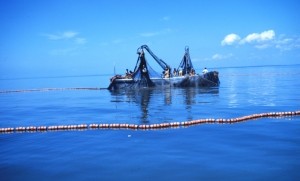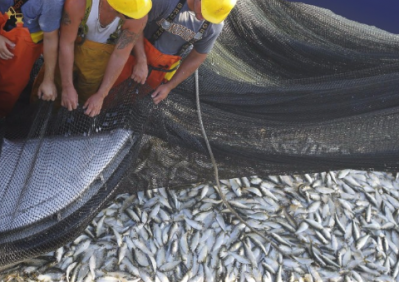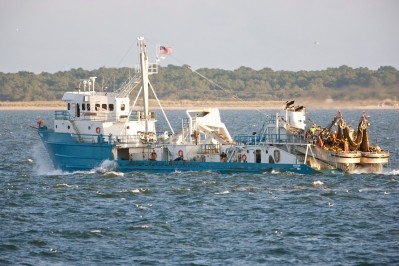More customers considering switch from anchovy to menhaden, Omega Protein says

The Peruvian anchovy fishery continues to supply the overwhelming majority of the world’s servings of omega-3 fatty acids. And the 18:12 EPA to DHA baseline specification of the fish oil business is derived largely by what those fish yield. But recent questions about the stability of that fishery have caused customers to start looking at alternatives, said Bret Scholtes, CEO of Omega Protein. Among those issues are the complete closing of one of the two fishing seasons in 2014 and the recent 11th-hour decision to allow a second fishing season this year to go forward.
Omega Protein is the world’s largest harvester of menhaden, a forage fish species it harvests in and near Chesapeake Bay and in the Gulf of Mexico. The company also sells other other marine oils, including anchovy and krill, and competes in the dietary ingredients side with plant oils, dairy proteins and botanical ingredients.
“I think every year that goes by customers are more open to the different species of oil. I think that menhaden is something that when we first got into this people would be saying, okay, menhaden, how is it compared to anchovy? I think now everyone is much more focused on what’s the EPA and DHA and DPA content,” Scholtes told analysts during the company’s recent earnings conference call. A transcript of the call has been posted on the site seekingalpha.com.
In addition to customers being more open to different oils, Scholtes said in this era of more emphasis on supply chain verification, the company’s vertical integration in menhaden oil is starting to become a competitive advantage.
“I think that the market continues to be more open to menhaden. We’ve seen growth in the menhaden going forward. There are a lot of people that we sell to who have bought anchovy and that’s what the spec is and we sell that. But the biggest advantage that the menhaden oil has I think is that vertical integration. It’s the ability to bring customers to the plant and show fish coming off the boat and being processed and refined in detail,” he said.
Defending the strategy
Omega Protein has faced some questions recently from an activist investor on its acquisition strategy. The assertion was that the corporate strategy of diversifying into the human nutrition markets as a way to insulate the company from the vagaries of operating what is essentially natural ingredient extraction business was spinning out of control, and the company was investing free cash in businesses in which it had little management expertise and that would be difficult to integrate. Over recent years Omega Protein has purchased Cyvex Nutrition, a botanical ingredient supplier, Wisconsin Specialty Protein, a whey protein producer, and Bioriginal, a supplier of plant and marine oil ingredients. The company also sells fish oil and fish meal into the animal nutrition markets. Scholtes said the company’s record on the human nutrition side of the business speaks for itself.
“I think the industry overall is probably grows mid single-digits, and we’ve been able to grow in a high single-digits over the last year. And so I think from a top line perspective, I would expect that we’d be able to grow at least as fast as the industry,” Scholtes said.
Getting off the acquisition merry go round

But in perhaps acknowledging some portion of the criticism, this is the first quarterly earnings call in some time in which the company did not mention plans for future acquisitions. Both Scholtes and chief financial officer Andrew Johannesen said the company is now more focused on integrating and streamlining its existing operations.
“I think that there are a lot of opportunities to improve what we’re doing and targeting capital probably on organic growth opportunities more so than on acquisition,” Scholtes said.
“With the various acquisitions we made over time, everyone has their own warehouse, different customer bases and things like that. As we look at the future of the business, who are the customers that we are going to be selling products to—and that’s both on plant oils, marine oils, protein, nutraceuticals—a lot of those customers are buying at least two or more of those categories from us. Where are they located, where are their distribution centers located? And then, trying to understand and do we really need all the warehouses we need today or should we be consolidating those and if we do consolidating where they’re going to go?” Johannesen said.
Earnings details
Omega Protein reported $112.2 million for the quarter, compared to $70.8 million in the same period a year ago. Gross profit margin was 31.4% for the quarter, compared to 20.0% in the same period a year ago. Net income came in at $10.6 million, or $14.8 million on an adjusted basis for the quarter, compared to $0.7 million, or $4.8 million on an adjusted basis, in the same period a year ago.

















